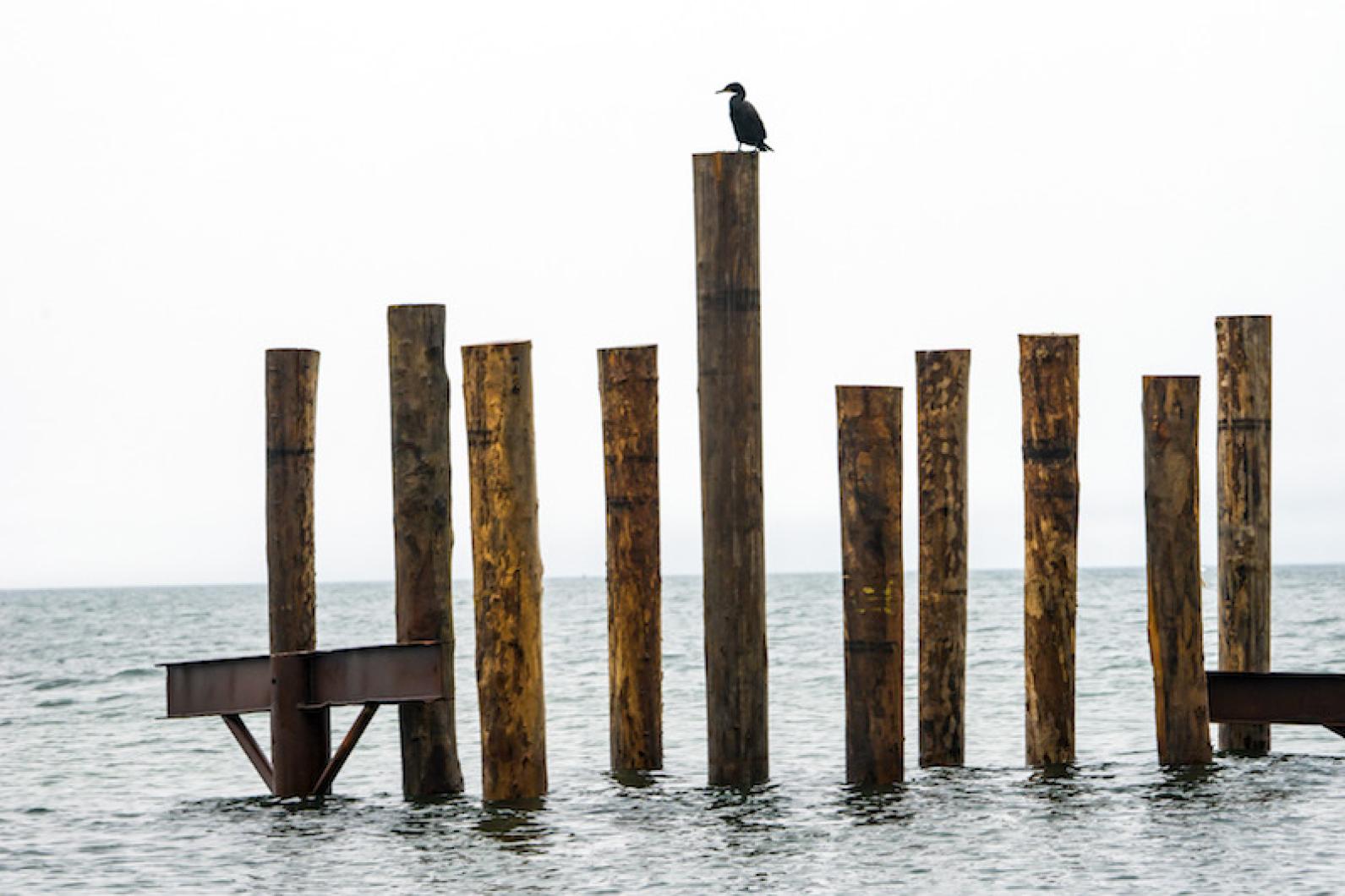Leading coastal scientists, managers and others will gather Monday for a daylong conference at the Harbor View Hotel looking at the Island’s changing coastline. Shifting sands at Katama and changing Island habitats top the agenda.
Speakers and guests include Brad Washburn, assistant director of the state Office of Coastal Zone Management, Britt Raubenheimer and Steve Elgar of the Woods Hole Oceanographic Institution, and many others from on and off the Island.
Organized by CZM and the Woods Hole Sea Grant Program with support from the Martha’s Vineyard Commission, the roughly biennial conference highlights current research and planning efforts across the Island. Three programs Monday morning will focus on shifting sands at Katama and changing Island habitats. The afternoon program will shift toward planning, with a presentation on flood mapping and others focusing on Island projects.
The day will wrap up with a brief panel discussion with MVC director Adam Turner, coastal geologist Jim Mahala of the state Department of Environmental Protection, Dukes County manager Martina Thornton and Mr. Washburn.
Coastal landforms, ecology and infrastructure have become greater concerns on the Island as the sea level rises. MVC coastal planner JoAnn Taylor will speak Monday afternoon about a new project to monitor how those changes affect wetland elevation at Felix Neck. An elevation monitoring system installed last year is the first of its kind on the Vineyard.
Another presentation will showcase ongoing efforts to restore Squibnocket Beach in the face of coastal erosion. Two much-debated projects received final approval from the town of Chilmark in May and could begin as soon as September. CZM has endorsed the effort as an example of managed shoreline retreat.
Andre Martecchini, an engineer at Kleinfelder, will discuss his recent study predicting how climate change and rising seas will affect Oak Bluffs through 2070. Mr. Martecchini presented his preliminary findings at a well-attended meeting in Oak Bluffs last September. Among other things, he said a hundred-year storm striking the Island in 2030 could create a 9.7-foot surge, enough to nearly cut off access to the Martha’s Vineyard Hospital.
In addition to the scheduled events, Mr. Turner hopes to draw attention to the many economic opportunities that revolve around the Island’s coastal environment. Over the last few months he and others have helped highlight the need for local jobs and training to nurture a so-called “blue economy.”
“It’s certainly something that I’m going to raise in talking about the relationship between the Island’s location, ecology and economic opportunity,” Mr. Turner said this week. He pointed to a number of recent projects dealing with coastal planning and infrastructure on the Island, including the MVC’s sea level rise assessment and a new seawall in Oak Bluffs that the MVC approved in January.
“You are seeing it all around the Island,” Mr. Turner said.
The 2016 Martha’s Vineyard Coastal Conference begins Monday, June 6, at 10 a.m. A related field trip to explore changes to the Katama barrier beach system will leave from the Chappy ferry Tuesday at 9:30 a.m.







Comments (12)
Comments
Comment policy »